When it comes to the competitive SUV market, the Nissan X-Trail and Renault Austral stand out as two noteworthy contenders, each bringing a unique blend of features, performance, and practicality. This comparison explores their technical specifications, innovations, and overall suitability for daily driving and adventure alike.
Nissan X-Trail vs Renault Austral – Który samochód bardziej do Ciebie pasuje?
Dwa auta, jedno starcie: Nissan X-Trail kontra Renault Austral.
Które wypada lepiej pod względem osiągów, zużycia i relacji ceny do jakości? Sprawdź teraz!
Design and Dimensions
The Nissan X-Trail boasts a robust and bold exterior, measuring 4680 mm in length, 1840 mm in width, and standing 1720 mm tall, which gives it a commanding presence on the road. Its thoughtful design also includes ample trunk space, offering a maximum capacity of 585 liters, making it perfect for families and long journeys.
In contrast, the Renault Austral is slightly more compact, with dimensions of 4510 mm in length, 1825 mm in width, and 1618 mm in height. Its trunk capacity is also respectable but smaller at 500 liters. While the Austral may not have quite the same volume for cargo as the X-Trail, its design still emphasizes practicality for everyday use.
Powertrain and Performance
Both SUVs feature advanced engine options, with the Nissan X-Trail available in multiple configurations, including petrol MHEV and full hybrid models. The X-Trail's power ranges from 163 to 213 horsepower, with torque figures peaking at 525 Nm, ensuring it can handle a variety of driving conditions. Acceleration from 0-100 km/h is impressive, with times as quick as 7 seconds, depending on the variant.
The Renault Austral, while slightly less powerful, still delivers a competent performance with engines producing up to 200 horsepower and 270 Nm of torque. It achieves similar 0-100 km/h times, with the quickest variant reaching 8.4 seconds. Both models have automatic transmissions, but the X-Trail also offers a CVT setup along with a reduction gearbox for enhanced off-road capability.
Fuel Efficiency
In the race for efficiency, the Nissan X-Trail performs admirably, with fuel consumption ratings ranging from 5.7 to 6.9 L/100km depending on the variant. The capabilities of a hybrid system give it an edge in eco-friendliness, making it a great choice for environmentally conscious drivers.
The Renault Austral, however, excels in fuel efficiency with ratings as low as 4.7 L/100km, particularly in its hybrid variant, offering a potentially lower running cost for everyday driving. The lower emissions of 105 g/km also underscore its eco-friendly design ethos.
Interior and Technology
Inside the Nissan X-Trail, you'll find a spacious and technologically advanced cabin suitable for up to seven passengers in certain configurations. Features include advanced safety systems, a user-friendly infotainment system, and high-quality materials that enhance comfort and driving pleasure.
On the other hand, the Renault Austral focuses on tech-savvy solutions, boasting a sleek interior equipped with the latest in infotainment technology and driver-assistance features. Its cabin, while not as spacious as the X-Trail’s, offers a modern feel that appeals to younger audiences and tech enthusiasts.
Driving Experience and Handling
The Nissan X-Trail's all-wheel drive option gives it a significant advantage in terms of handling and stability, particularly in adverse weather conditions or off-road situations. Its well-tuned suspension provides a smooth ride, balancing comfort with sportiness.
Meanwhile, the Renault Austral’s front-wheel drive system, paired with its lighter curb weight of 1539 to 1592 kg, offers nimble handling and responsiveness. Its smaller footprint allows easy maneuverability in urban settings, making it quite practical for city dwellers.
Conclusion
The comparison between the Nissan X-Trail and Renault Austral reveals two strong contenders in the SUV segment, each perfectly suited to different driver needs. The X-Trail emerges as the choice for those needing space, a powerful engine, and all-wheel drive capabilities, while the Austral appeals to those who prioritize fuel efficiency, innovative technology, and a modern design.
Ultimately, both vehicles reflect their brands' commitment to innovation and quality, making them worthy options in today’s dynamic automotive landscape.
Szczegóły techniczne: konkretne różnice między modelami
Koszty i zużycie
W kwestii ekonomii oba modele pokazują ciekawe różnice.
Renault Austral ma trochę przewagę cenową – jego cena zaczyna się od 152400 zł, podczas gdy Nissan X-Trail kosztuje 174400 zł. Różnica wynosi około 21964 zł.
W spalaniu również widać różnice: Renault Austral zużywa 4.80 L i jest tym samym trochę oszczędniejszy niż Nissan X-Trail, który spala 5.70 L. To około 0.90 L różnicy na 100 km.
Silnik i osiągi
Moc, moment obrotowy i przyspieszenie wiele mówią o tym, jak auto prowadzi się na co dzień. Tu widać, kto oferuje więcej dynamiki.
Pod względem mocy silnika Nissan X-Trail ma prawie niezauważalny przewagę – 213 KM zamiast 200 KM. To różnica około 13 KM KM.
W przyspieszeniu 0–100 km/h Nissan X-Trail jest czytelny szybszy – 7 s wobec 8.40 s. Różnica wynosi około 1.40 s sekundy.
Pod względem prędkości maksymalnej Nissan X-Trail jest niewielki lepszy – osiąga 200 km/h, podczas gdy Renault Austral kończy na 180 km/h. Różnica to około 20 km/h.
Różnica widoczna jest również w momencie obrotowym: Nissan X-Trail ciągnie znaczący mocniej – 525 Nm wobec 270 Nm. Różnica to około 255 Nm.
Przestrzeń i praktyczność
Samochód rodzinny czy codzienny towarzysz – który oferuje więcej miejsca, komfortu i elastyczności?
Miejsca siedzące: Nissan X-Trail oferuje zauważalny więcej miejsc – 7 vs 5.
Pod względem masy własnej Renault Austral jest prawie niezauważalny lżejszy – 1539 kg wobec 1668 kg. Różnica to około 129 kg kg.
Pod względem pojemności bagażnika Nissan X-Trail oferuje prawie niezauważalny więcej miejsca – 585 L wobec 555 L. To różnica około 30 L litrów.
W maksymalnej pojemności ładunkowej Renault Austral wypada trochę lepiej – do 1761 L, czyli o około 337 L więcej niż Nissan X-Trail.
Pod względem ładowności Nissan X-Trail wypada trochę lepiej – 574 kg wobec 477 kg. Różnica to około 97 kg kg.
Kto zostaje zwycięzcą?
Podsumowując, Nissan X-Trail jest prowadzi wyraźnie w ogólnym zestawieniu i zasługuje na tytuł DriveDuel Champion.
Oferuje lepszy, bardziej zrównoważony pakiet i jest praktyczniejszym towarzyszem na co dzień.
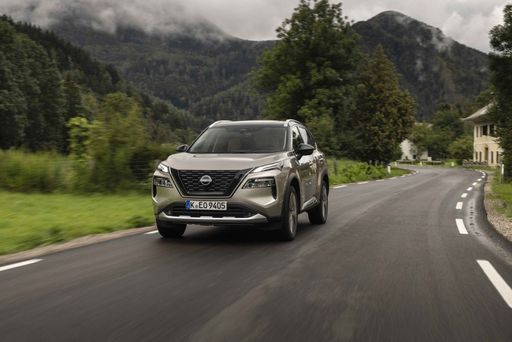
Nissan X-Trail
Nissan X-Trail
Nissan X-Trail to praktyczny i wygodny SUV dla rodziny, który stawia na komfort i funkcjonalność zamiast krzykliwej ekstrawagancji. Jeśli szukasz auta, które nie będzie gwiazdą pokazu, za to świetnie sprawdzi się na dłuższych trasach i w codziennym użytkowaniu, X-Trail trafi w sedno.
szczegóły @ germany.nissannews.com
@ germany.nissannews.com
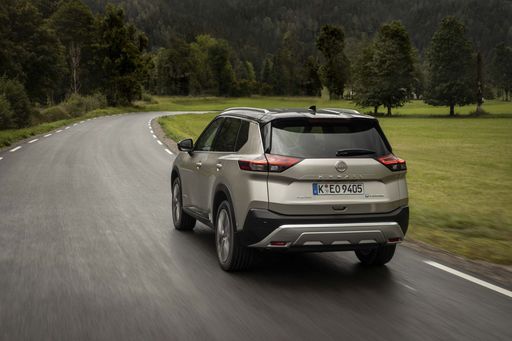 @ germany.nissannews.com
@ germany.nissannews.com
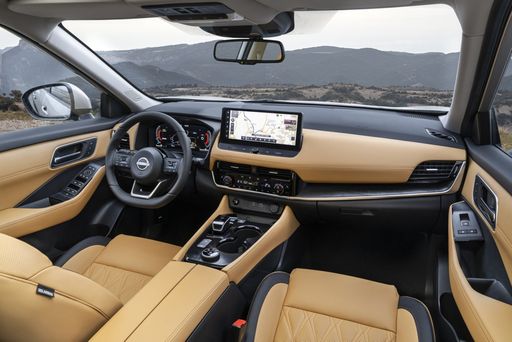 @ germany.nissannews.com
@ germany.nissannews.com
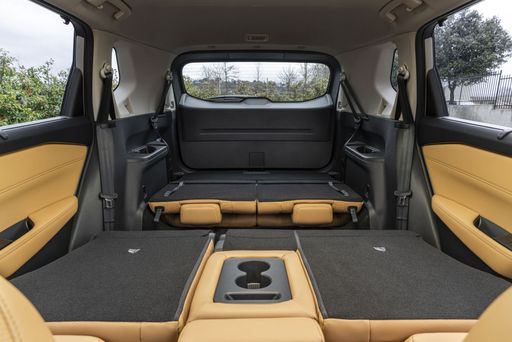 @ germany.nissannews.com
@ germany.nissannews.com
Renault Austral
Renault Austral to elegancki i praktyczny SUV, który łączy nowoczesny design z przemyślanym wnętrzem stworzonym pod codzienną wygodę kierowcy i pasażerów. Na drodze zachowuje się spokojnie i pewnie, oferując komfort i użyteczne rozwiązania — to sprytny wybór dla kogoś szukającego auta, które sprawdzi się zarówno w mieście, jak i na dalszych trasach.
szczegóły @ Renault
@ Renault
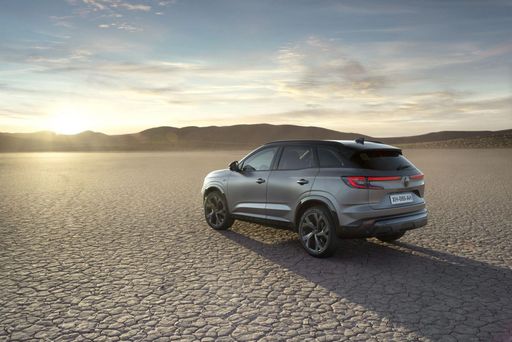 @ Renault
@ Renault
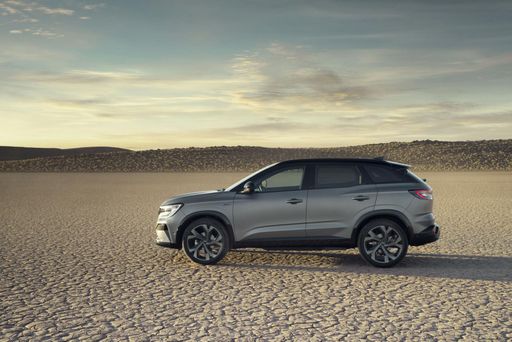 @ Renault
@ Renault
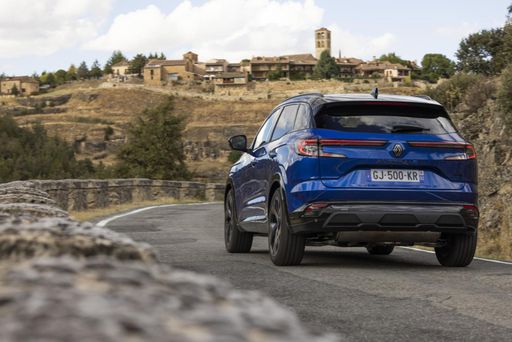 @ Renault
@ Renault
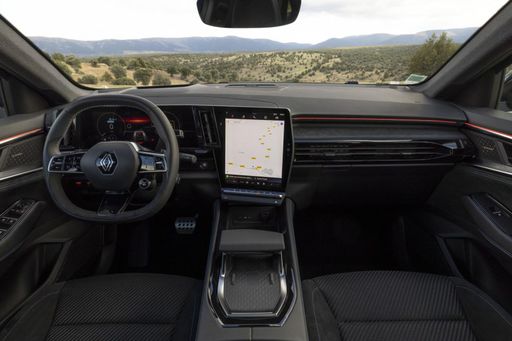 @ Renault
@ Renault
 @ Renault
@ Renault

|

|
|
|
|
Koszty i Zużycie |
|
|---|---|
|
Cena
174400 - 258300 zł
|
Cena
152400 - 193900 zł
|
|
Zużycie L/100km
5.7 - 6.9 L
|
Zużycie L/100km
4.8 - 6.5 L
|
|
Zużycie kWh/100km
-
|
Zużycie kWh/100km
-
|
|
Zasięg elektryczny
-
|
Zasięg elektryczny
-
|
|
Pojemność baterii
-
|
Pojemność baterii
-
|
|
CO2
131 - 161 g/km
|
CO2
109 - 148 g/km
|
|
Pojemność zbiornika paliwa
55 L
|
Pojemność zbiornika paliwa
55 L
|
Wymiary i Nadwozie |
|
|---|---|
|
Typ nadwozia
SUV
|
Typ nadwozia
SUV
|
|
Miejsca siedzące
5 - 7
|
Miejsca siedzące
5
|
|
Drzwi
5
|
Drzwi
5
|
|
Masa własna
1668 - 1961 kg
|
Masa własna
1539 - 1613 kg
|
|
Pojemność bagażnika
177 - 585 L
|
Pojemność bagażnika
527 - 555 L
|
|
Długość
4680 mm
|
Długość
4533 mm
|
|
Szerokość
1840 mm
|
Szerokość
1825 mm
|
|
Wysokość
1720 mm
|
Wysokość
1645 mm
|
|
Maksymalna pojemność bagażnika
1396 - 1424 L
|
Maksymalna pojemność bagażnika
1736 - 1761 L
|
|
Ładowność
432 - 574 kg
|
Ładowność
464 - 477 kg
|
Silnik i Wydajność |
|
|---|---|
|
Typ silnika
Mild Hybrid Benzyna, Pełna Hybryda
|
Typ silnika
Mild Hybrid Benzyna, Pełna Hybryda
|
|
Skrzynia biegów
Automatyczna
|
Skrzynia biegów
Automatyczna
|
|
Szczegóły skrzyni biegów
Skrzynia CVT, Reduktor
|
Szczegóły skrzyni biegów
Skrzynia CVT, Automatyczna skrzynia biegów
|
|
Rodzaj napędu
Napęd na przednie koła, Napęd na cztery koła
|
Rodzaj napędu
Napęd na przednie koła
|
|
Moc KM
163 - 213 KM
|
Moc KM
158 - 200 KM
|
|
Przyspieszenie 0-100km/h
7 - 9.6 s
|
Przyspieszenie 0-100km/h
8.4 - 9.7 s
|
|
Maksymalna prędkość
170 - 200 km/h
|
Maksymalna prędkość
180 km/h
|
|
Moment obrotowy
300 - 525 Nm
|
Moment obrotowy
270 Nm
|
|
Liczba cylindrów
3
|
Liczba cylindrów
3 - 4
|
|
Moc kW
120 - 157 kW
|
Moc kW
116 - 147 kW
|
|
Pojemność silnika
1497 cm3
|
Pojemność silnika
1199 - 1332 cm3
|
Ogólne |
|
|---|---|
|
Rok modelowy
2024
|
Rok modelowy
2025
|
|
Klasa efektywności CO2
F, D, E
|
Klasa efektywności CO2
E, C
|
|
Marka
Nissan
|
Marka
Renault
|
Czy Nissan X-Trail jest dostępny z różnymi napędami?
Model oferowany jest z napędem Napęd na przednie koła albo Napęd na cztery koła.
Wyświetlane ceny i dane są szacunkowe, oparte na niemieckich cenach katalogowych i mogą się różnić w zależności od kraju. Te informacje nie stanowią wiążącej oferty.
